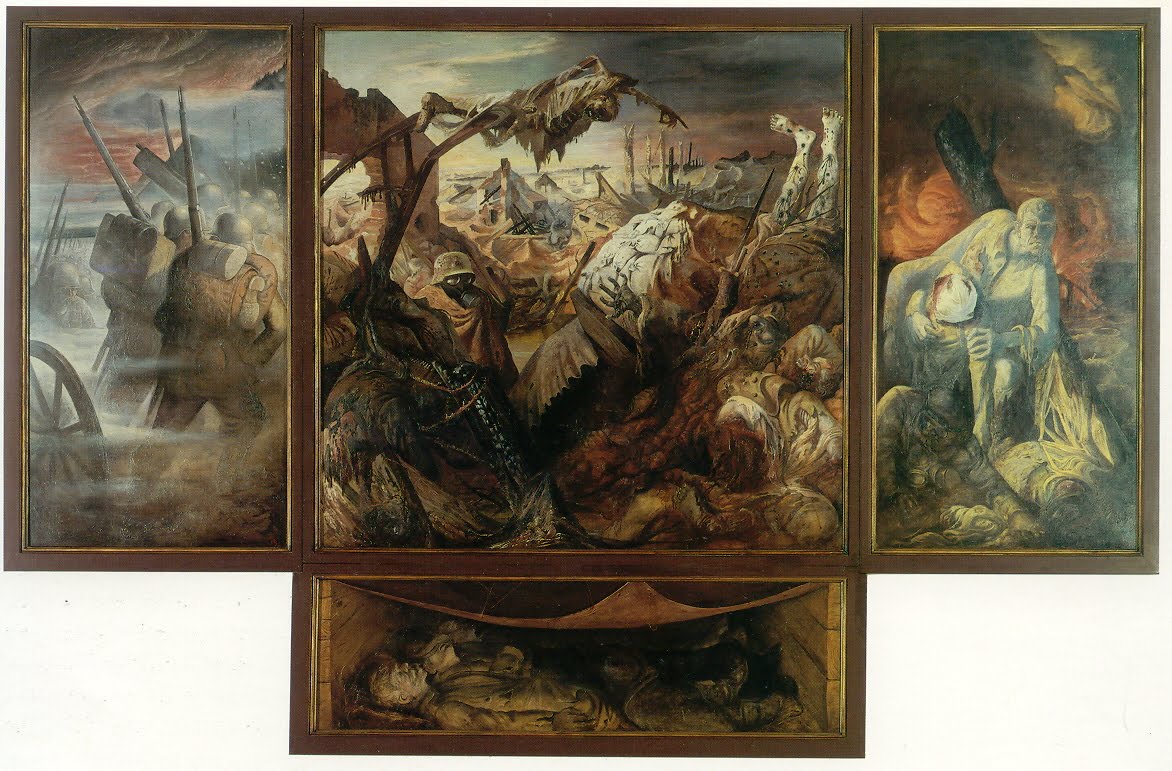
For as long as I can remember I have always been a bit ‘picky’ with art. I do not claim to have great aesthetic tastes (my bedroom resembles a charity shop more than a peaceful sleeping space), but as I grew up I found myself strongly attracted to certain artistic styles and equally repelled by others.
This disposition and lack of exposure to much of the world of art led me to see all ‘Christian art’ as tacky and kitsch. Paintings of baby Jesus and his porcelain Mother didn’t register with my experience. I preferred the grittier sounds offered to me by Limp Bizkit and the visual world of Mark Eckō’s Getting Up: Contents Under Pressure (2006) on PS2.
As I became a Christian aged 15, there was no real convergence between my love for art and my newfound passion for Christ for quite some time. I trawled through my school’s art books for something ‘interesting’ as my GCSE’s drew to an end, and there I found Mathis Grünewald’s Isenheim Altarpiece (1510-16). Looking at his crucifixion I was shook by the rawness of this image, appearing so ancient and yet, contemporary.

The altarpiece originally created for St. Anthony’s Monastery (an hospital specializing in skin treatment) depicts Jesus gaunt and plagued, agonizingly stretched across the bent crossbeam. An interesting historic detail is that the Messiah’s blighted flesh has been painted to register with the patients suffering from the plague. This is our Christ, like you and I, suffering as we do.
Mary is no longer a porcelain doll, but a haggard old lady, almost fainting into the arms of the distressed disciple at the sight of her brutalized son. The world has fallen apart and the terrors of human injustice have won. Our God has been slain and we are witness to the dark reign of blind and pitiless cruelty.
Soaking this up from the glossy pages of history, this picture appeared far more divine to me than Titian’s Noli me tangere (1510-15) that sees a resurrected Christ evading the earth-bound pleas of Mary from Magdala. Grünewald had painted a Christ that I could register with and one that met my expectations and my existential experience.
From this point I began to have a growing interest in German expressionism. The next crucifix I will focus on is Otto Dix’s War Triptych (1929-32). Painted to show the true horrors of war, the work lost Dix his respected position as a professor at Dresden’ Art Academy. Dix’s exhibiting of this Grünewaldian passion was a stark rejection of the absurd heroism that had begun to glamorise trench warfare.

We can see the similarities between the triptychs immediately. In the central piece, John the baptizer’s hand still points to the suffering servant while the remains of his body is impaled on the beams of a shelled building. The Christ-figure is slumped upside down, his dismembered head crowned with barbed wire, a viridescent hand paralyzed in mid-air, and his skin dashed with the contemporary plague of gun spray.
Dix doesn’t show us a world in which we see Christ simply struck with our infirmities but one in which we bombarded the image of God in the likeness of man into nothingness. Certainly, more can be said about the details of the two paintings, and I invite the reader to pick them out and comment on them.
When looking upon Dix’s crucifix for the modern man, I knew that this work meant far more than I could articulate. Though many argue that War Triptych is a godless blasphemy to the image of Christ in a post-Christian world, I cannot but see a deeper truth in Dix’s horror. If the German expressionist is guilty of besmirching the image of Christ, how much more are we guilty of that same charge? It is not a blasphemy to dare to paint Christ in this desolate world, but a blasphemy that we have created this desolate world, and by extension, painted Christ into it.
Otto Dix’s triptych comforted my tormented mind in the same ways Fra Angelico’s resolute The Mocking of Christ (1441-3) may have done to many a contemplative saint. But in my home where our hymns were more Nothing Else Matters (Metallica, 1991) than Nothing but the Blood of Jesus (Robert Lowry, 1876) these two German crucifixes spoke to me about a Christ who had truly descended into my world.
It registered. It is, of course, not the complete picture but it was a picture that I could start from. Which artists, movements, or media first caught your attention and imagination? Do you still revisit these works, or have they lost their magic?
